
William Crush Daldy was a captain and New Zealand politician.
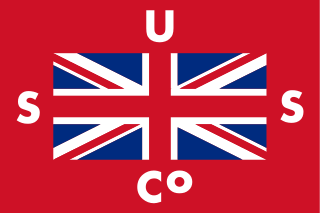
Union Steam Ship Company of New Zealand Limited was once the biggest shipping line in the southern hemisphere and New Zealand's largest private-sector employer. It was incorporated by James Mills in Dunedin in 1875 with the backing of a Scottish shipbuilder, Peter Denny. Bought by shipping giant P&O around the time of World War I it was sold in 1972 to an Australasian consortium and closed at the end of the twentieth century.

Robert Gillies was a 19th-century Member of Parliament in Otago, New Zealand. He was born in Rothesay on the Isle of Bute, Scotland.
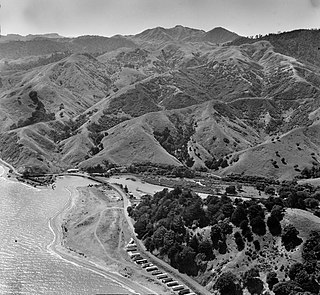
The Waikawau River is the name of two rivers of the Coromandel Peninsula in New Zealand's North Island. The more southerly flows generally west from its sources in the Coromandel Range, reaching the Firth of Thames at Waikawau Beach, almost 6 km (3.7 mi) north of Tapu. The other flows south east off the Moehau Range to join the Pacific at Waikawau. Both rivers were officially named on 21 June 2019.
Henry Niccol was probably the first shipbuilder in Auckland, New Zealand. He was born in 1819 in Greenock. He was the father of George Turnbull Niccol and Malcolm Niccol.
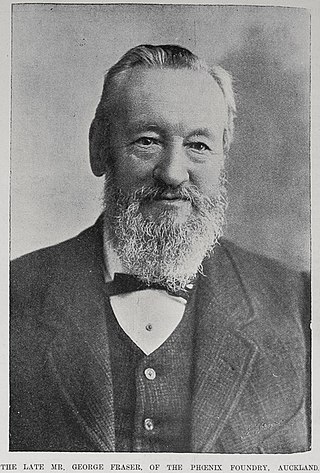
George Fraser was a New Zealand engineer, foundry proprietor and ship owner. He was born in Aberdeen, Aberdeenshire, Scotland on 28 June 1832.

The Northern Steam Ship Company Ltd (NSS) served the northern half of the North Island of New Zealand from 1881 to 1974. Its headquarters, the Northern Steam Ship Company Building, remains in use on Quay St, Auckland as a bar.

Rangiaowhia was, for over 20 years, a thriving village on a ridge between two streams in the Waikato region, about 4 km (2.5 mi) east of Te Awamutu. From 1841 it was the site of a very productive Māori mission station until the Invasion of the Waikato in 1864. The station served Ngāti Hinetu and Ngāti Apakura. Only a church remains from those days, the second oldest Waikato building.
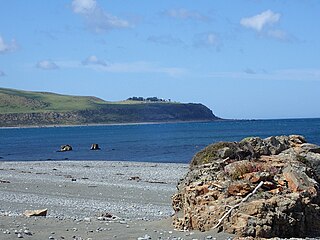
Fitzroy Bay is a bay close to the entrance of Wellington Harbour in New Zealand. It lies to the southeast of the entrance to the harbour, between Pencarrow Head and Baring Head. Lake Kohangatera drains into the bay through Gollans Stream.
Novelty was a barque-rigged iron paddle steamer, built at Sydney in 1863.

SS Hilonian was a general passenger and cargo steamer, built as the Triumph in 1880 at Middlesbrough for McIntyre & Co, and later fitted with refrigeration equipment and leased to Shaw Savill and the New Zealand Shipping Company. She sank and ran aground many times, the final sinking being by torpedo in 1917.
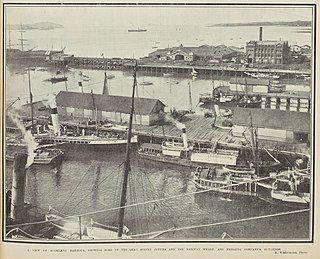
SS Rotomahana was an 1876 harbour steamer and the first iron vessel to be built in Auckland, though launched only 28 minutes ahead of another, though smaller, iron ship. Rotomahana was a name used by at least two other ships of the era, presumably because Rotomahana and its Pink and White Terraces had become better known after the Duke of Edinburgh visited in 1870.

Phoenix Foundry, often printed as Phœnix, was an engineering company in Auckland from 1861 to 1952. By 1900 it was on the verge of bankruptcy, but also Auckland's largest engineering works, supplying a wide range of goods and often leading in the design of equipment used to exploit the country's resources, such as timber and flax mills, crushers for gold ore and locomotives, pumps, cement and gas works and steamers. The foundry started with engineer, George Fraser, and a handful of employees, but grew to employ hundreds and operated under several names, including Fraser and Tinne and George Fraser & Sons Ltd.

PS Governor Wynyard, was a small steam ship, the first to be built in New Zealand, and was launched in 1851. She was a paddle steamer schooner, built of pohutukawa, with kauri planks. In 1853 she left her Tamaki River service in Auckland and was sold in Melbourne in 1852 during the gold rush, but was soon serving as a ferry in Tasmania, until she had her primitive engines removed in 1858. She sprang a leak and became a beached wreck in 1873.
SS Tauranga was the first coastal trading steam ship to be built in New Zealand, though a harbour steamer, Governor Wynyard, had been built at Auckland in 1851.

SS Go Ahead was a twin screw-steamer, launched on the afternoon of Saturday 20 April 1867 by Seath and Connell, of Rutherglen, for the Clyde Shipping Company, with a plan to use her in New Zealand coastal trading. She had 30, or 35 hp (26 kW), high pressure engines, and tubular boilers from Campbell & Son's foundry.

George Holdship (1839–1923) emigrated to Auckland in 1855 and became a businessman, mainly involved in timber logging and sawmills. His companies removed much of North Island’s native forest, initially kauri and later kahikatea. He moved to Sydney in 1913.
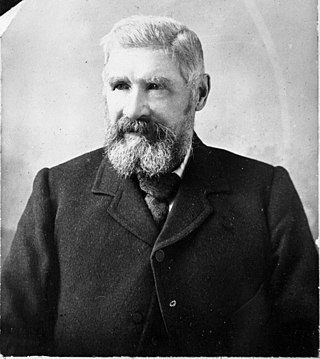
Isaac Coates (1840–1932) was mayor of Hamilton, New Zealand, from 1888 to 1892, a farmer, flax-miller, and a drainage and railway contractor.

Te Rore was in the 1850s an important transhipment point on New Zealand's Waipā River, between the agriculture of the Waikato basin and its Auckland market. That was ended in 1864 by the Invasion of the Waikato, when Te Rore was, for a few months, part of the supply route to four redoubts set up nearby. It is now a rural community in the Waipa District, 6 km (3.7 mi) north of Pirongia and roughly the same distance south of Ngāhinapōuri on State Highway 39.

The Anchor Shipping and Foundry Company linked Nelson with other parts of New Zealand from 1870 to 1974. The company's former office remains on the quay at Nelson, as do steps of their foundry, which built one of their ships, repaired their fleet and made other machinery.



















